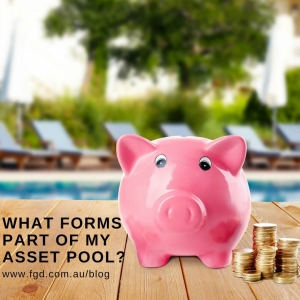
When a marriage or de facto relationship breaks down, a property settlement should be determined (either by agreement or as a result of a Court decision).
The first question to be answered before assets can be divided is “what are our assets?”.
The answer can be more or less complex depending on your circumstances, but generally speaking, there are two types of assets:
- Non-superannuation assets. This includes essentially all of your “now” assets and liabilities. This can include assets such as your home, home loan, cars, funds in bank accounts, furniture and possessions, your credit card debts. Businesses, family trusts and companies are also assets to be considered.
- Superannuation assets. This includes your superannuation, your “future” assets. Superannuation can be held in a number of ways.
- An accumulation superannuation entitlement (such as Hesta, CBUS, First State Super and many others).
- A defined benefit superannuation entitlement (such as the Commonwealth Superannuation Scheme or the Military Superannuation and Benefits Scheme).
- A self-managed superannuation fund. This is a fund created and managed by the members. Often families or couples set up their own personal super fund and manage the investments. Self-managed superannuation funds have additional complexities, which we will cover in our next blog.
When a relationship ends, especially where people are far from retirement, it is easy to forget or discount the importance of superannuation. You should make sure that you get advice about the treatment and nature of your superannuation interests as part of your property settlement.
At Farrar Gesini Dunn, we are experts at advising clients in relation to their superannuation interests as part of their family law process. We can make sure that your financial security on retirement is considered as part of the process.
Robert is a director and family lawyer in our Canberra Office.